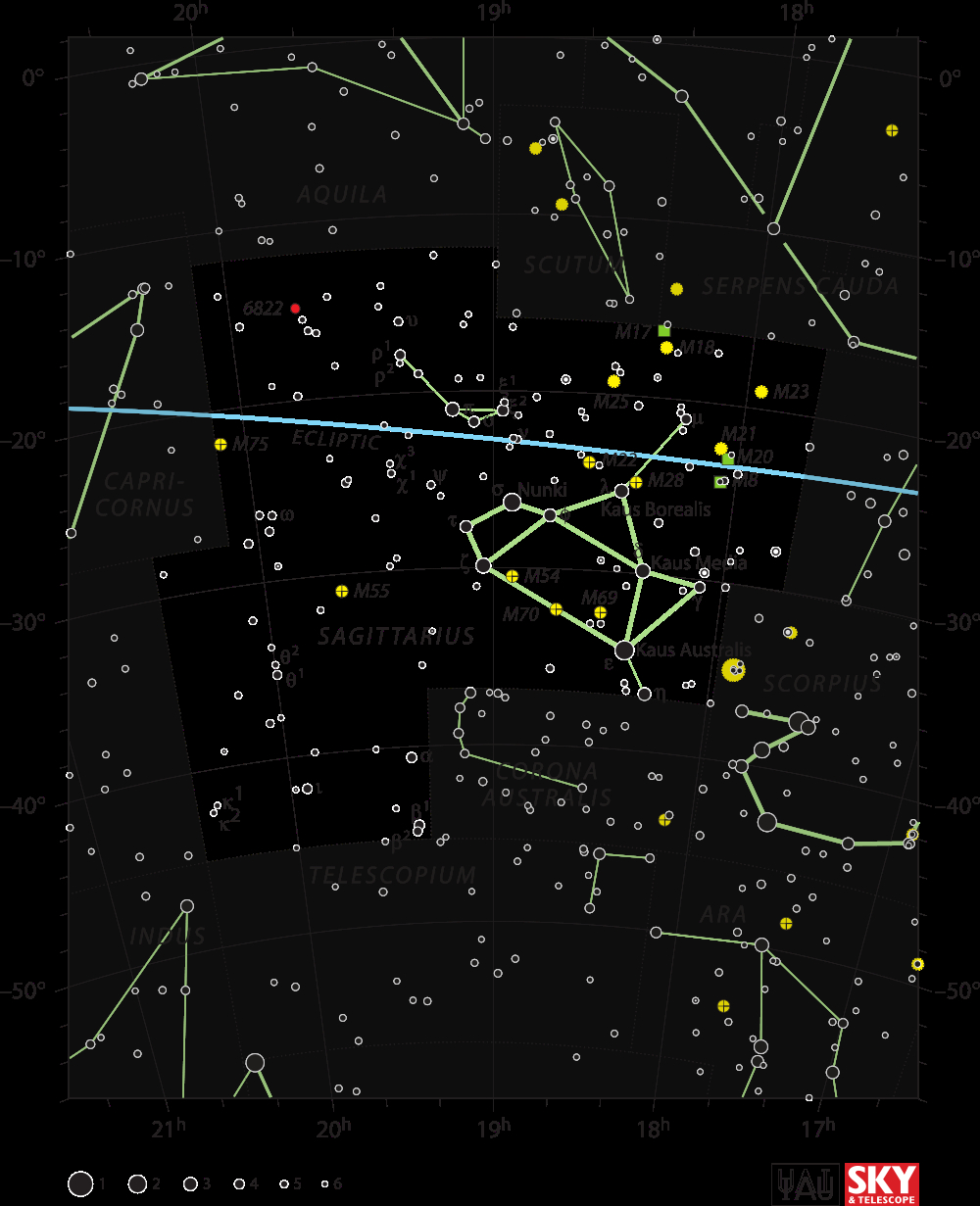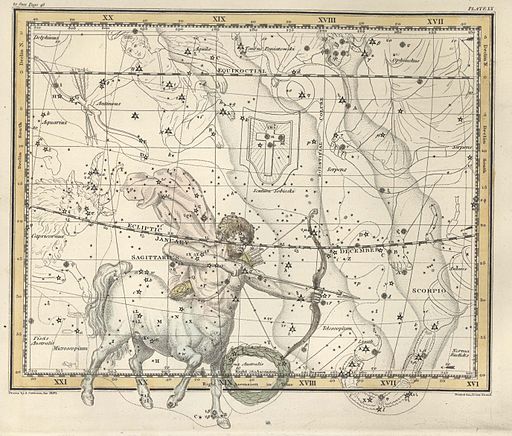
By IAU and Sky & Telescope magazine (Roger Sinnott & Rick Fienberg) [CC-BY-3.0], via Wikimedia Commons
"The Archer"

By IAU and Sky & Telescope magazine (Roger Sinnott & Rick Fienberg) [CC-BY-3.0], via Wikimedia Commons
Abbreviation: Sgr
Genitive: Sagittarii
Constellation family: Zodiac
Nearest constellations: Aquila, Capricornus, Corona Australis,
Indus, Microscopium, Ophiuchus, Scorpius,
Scutum, Serpens, and Telescopium
Right ascension: 19.11h
Declination: -25.77°
Visible between latitudes: +55° and -90°
Square degrees: 867
Luminary: Kaus Australis (Epsilon Sagittarii)
Named stars: Kaus Australis, Kaus Borealis, Kaus Media, Rukbat, Arkab Prior, Arkab Posterior, Nash, Ascella, Albaldah, Nunki, Hecatebolus
Notable deep sky objects: M8 (Lagoon Nebula), M20 (Trifid Nebula), M21, M22, M23, M24, M25, M28, M54, M55, M69, M70, M75

By Alexander Jamieson (United States Naval Observatory Library) [Public domain], via Wikimedia Commons
Sagittarius is a large constellation in the Southern Hemisphere. It is best seen in August, which means it is visible during the summer at northern latitudes and during the winter at southern latitudes.
Eight of the brightest stars in Sagittarius form a distinctive teapot shape, which is often used to identify the constellation. The center of the Milky Way galaxy lies close to Sagittarius.
Sagittarius is one of the twelve constellations of the zodiac.
Myths regarding Sagittarius are varied. In Greek mythology, Sagittarius is sometimes described as a centaur that was placed in the sky to help guide Jason and the Argonauts, a group of Greek warriors. Other times the constellation is associated with Crotus, son of the god Pan and an excellent hunter and musician.
M1-67 (nebula) and Wolf-Rayet 124 (exploding star):

By Judy Schmidt [CC0], via Wikimedia Commons
M17 (the Omega Nebula):

M20 (the Trifid Nebula):

By Subaru Telescope (NAOJ), Hubble Space Telescope, and Martin Pugh; Processing: Robert Gendler [Public domain], via Wikimedia Commons
M8 (the Lagoon Nebula):

By ESO/VPHAS+ team [CC-BY-4.0], via Wikimedia Commons
NGC 6822 (Barnard's Galaxy, a dwarf irregular galaxy):

By ESO [CC-BY-4.0], via Wikimedia Commons